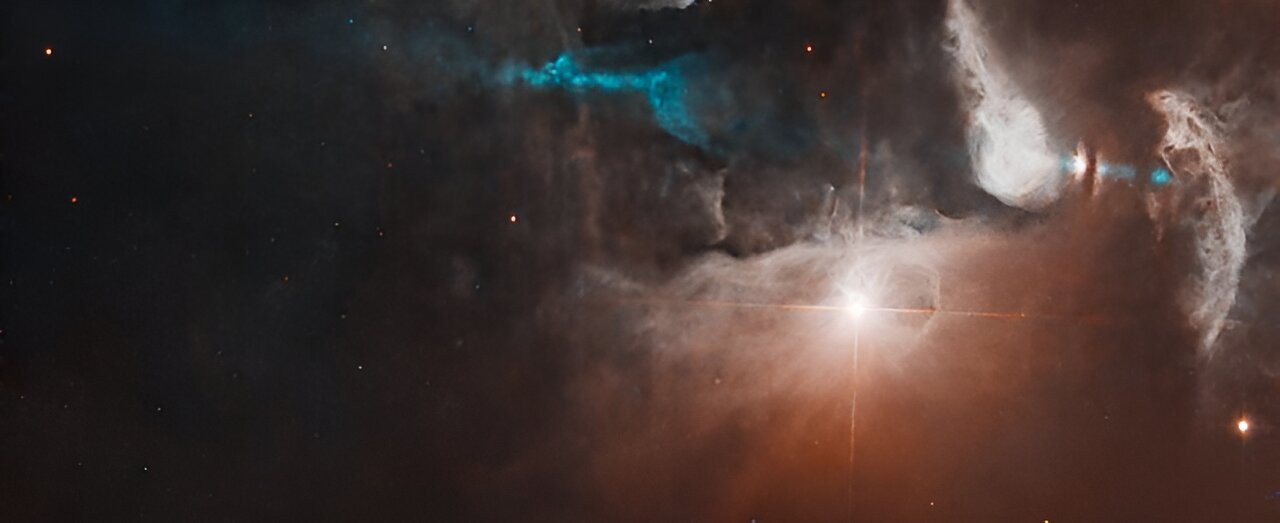FS Tau is a multiple star system still in the formation stage. An amazing event happened there recently, and the Hubble Space Telescope showed us this incredible sight.

Star Cradle
The Hubble Space Telescope recently showed an amazing stellar show associated with the star FS Tau. You can see it in this photo. We are talking about a multiple star system consisting of FS Tau A, a bright star-like object in the center of the image, and FS Tau B (Haro 6-5B), a bright object in the far right corner, which is partially hidden by a dark vertical band of dust.
These young objects are located in the so-called “Star Cradle”. The age of the system is only about 2.8 million years old, which is very young for a star system. Our Sun, on the contrary, is about 4.6 billion years old.
FS Tau B is a forming star. It is surrounded by a protoplanetary disk — a pancake-shaped accumulation of dust and gas left after its formation. After a while, planets should form out of it. A thick dust band, which is visible almost closely, separates what are considered illuminated surfaces of the disk.
FS Tau B is probably in the process of turning into a T Tauri star — a young variable star that has not yet begun nuclear fusion, but is already turning into something similar to our Sun.
Space jets of FS Tau
Protostars are known to emit fast, column-like streams of energetic material called jets, and FS Tau B is a prime example of this phenomenon. Protostar is the source of an unusual asymmetric two-sided jet, which is visible here in blue. Its asymmetric structure may be due to the fact that the mass is displaced from the object at different speeds.
FS Tau B is also classified as a Herbig-Haro object. They are formed when jets of ionized gas ejected by a young star collide with neighboring clouds of gas and dust at high speeds, creating bright spots of nebulae.
FS Taurus is part of the Taurus and Auriga region, a cluster of dark molecular clouds in which numerous newly formed and young stars are located. It is located about 450 light-years away in the corresponding constellations.
Hubble has previously observed this region, which star-forming activity makes it an attractive target for astronomers. The current observations were made by the space telescope as part of the study of peripheral dust disks around young stellar objects.
According to phys.org
Follow us on Twitter to get the most interesting space news in time
https://twitter.com/ust_magazine


